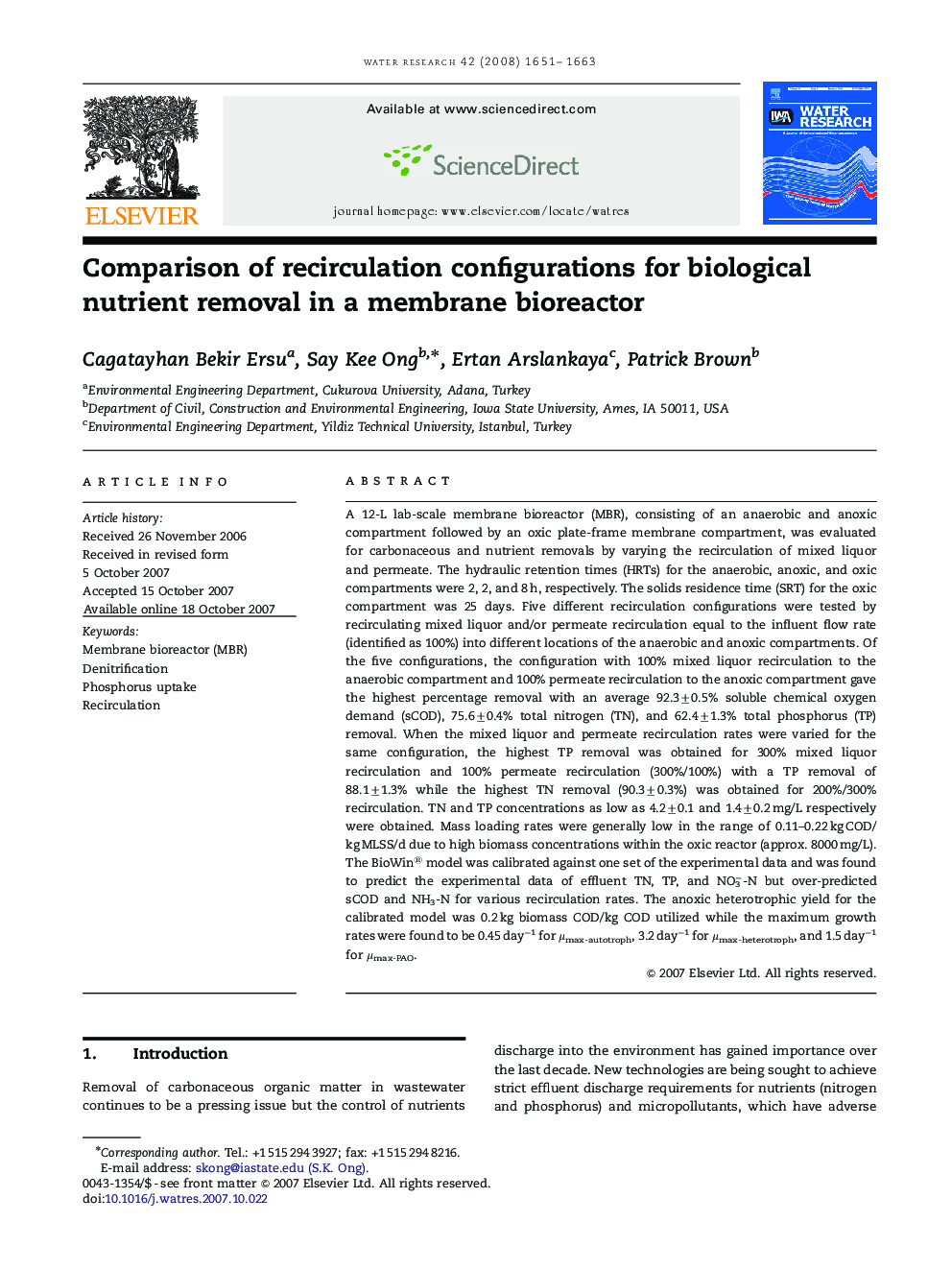| کد مقاله | کد نشریه | سال انتشار | مقاله انگلیسی | نسخه تمام متن |
|---|---|---|---|---|
| 4485053 | 1623123 | 2008 | 13 صفحه PDF | دانلود رایگان |

A 12-L lab-scale membrane bioreactor (MBR), consisting of an anaerobic and anoxic compartment followed by an oxic plate-frame membrane compartment, was evaluated for carbonaceous and nutrient removals by varying the recirculation of mixed liquor and permeate. The hydraulic retention times (HRTs) for the anaerobic, anoxic, and oxic compartments were 2, 2, and 8 h, respectively. The solids residence time (SRT) for the oxic compartment was 25 days. Five different recirculation configurations were tested by recirculating mixed liquor and/or permeate recirculation equal to the influent flow rate (identified as 100%) into different locations of the anaerobic and anoxic compartments. Of the five configurations, the configuration with 100% mixed liquor recirculation to the anaerobic compartment and 100% permeate recirculation to the anoxic compartment gave the highest percentage removal with an average 92.3±0.5% soluble chemical oxygen demand (sCOD), 75.6±0.4% total nitrogen (TN), and 62.4±1.3% total phosphorus (TP) removal. When the mixed liquor and permeate recirculation rates were varied for the same configuration, the highest TP removal was obtained for 300% mixed liquor recirculation and 100% permeate recirculation (300%/100%) with a TP removal of 88.1±1.3% while the highest TN removal (90.3±0.3%) was obtained for 200%/300% recirculation. TN and TP concentrations as low as 4.2±0.1 and 1.4±0.2 mg/L respectively were obtained. Mass loading rates were generally low in the range of 0.11–0.22 kg COD/kg MLSS/d due to high biomass concentrations within the oxic reactor (approx. 8000 mg/L). The BioWin® model was calibrated against one set of the experimental data and was found to predict the experimental data of effluent TN, TP, and NO3−-N but over-predicted sCOD and NH3-N for various recirculation rates. The anoxic heterotrophic yield for the calibrated model was 0.2 kg biomass COD/kg COD utilized while the maximum growth rates were found to be 0.45 day−1 for μmax-autotroph, 3.2 day−1 for μmax-heterotroph, and 1.5 day−1 for μmax-PAO.
Journal: Water Research - Volume 42, Issues 6–7, March 2008, Pages 1651–1663